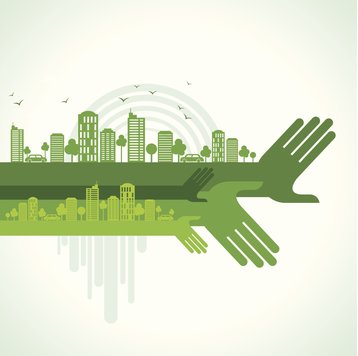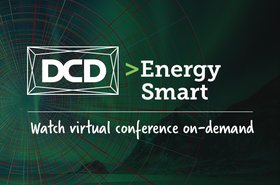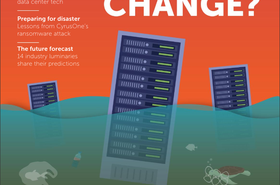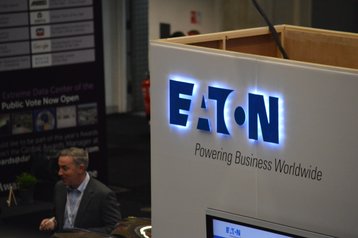In a bid to reduce emissions, renewable sources are being used where possible - but this creates new problems for the grid, making it harder to match generation and consumption. Data centers could help to create a balance, through techniques referred to as “demand response” but so far it’s proven difficult to enlist their help.
All the world’s economies are attempting to reduce carbon emissions by increasing the share of renewable sources in their electricity generation, and reducing that provided by fossil fuels. However, there are two problems with this.
This feature appeared in the March issue of DCD Magazine. Subscribe for free today.
Fluctuating power
Firstly, apart from hydroelectric power, renewables are mostly intermittent. Solar panels and wind turbines only deliver energy when the sun shines or the wind blows, and can’t be switched on as required. And secondly, the fossil fuel-powered capacity that is being retired is exactly the steady, readily available capacity that the grid needs, providing a continuous baseload, and also extra flexible capacity as needed.
The electricity grid has to satisfy a fluctuating demand - and there are two big factors where long term policies designed to reduce emissions could actually add to the burden on the grid. Electricity is being proposed as a replacement for fossil fuels in cars and heating. But this will increase the demand for electricity - and it only reduces emissions if green electricity can be increased to match that demand.
To respond to changing supply and demand, the grid has to become flexible. According to Mohan Gandhi, a civil engineer and analyst at the New Bridge Founders thinktank: “As intermittent renewables penetrate further into the generation mix, flexibility becomes an increasingly important feature of the electricity system.”
Some of this flexibility is based on moving electricity to where it is needed, but transmitting power is costly and involves losses - and the cables may not even be there: “Renewables are actually being built faster than cables can be laid,” says Gandhi. “In Germany, wind generation in the north has grown enormously, but the interconnection cables between the north and south are yet to be built.”
Instead of moving electricity around, another approach is to shift demand towards times when electricity is cheaper or more available - an approach dubbed “demand response.”
This can be as simple as offering consumers a cheaper tariff for night-time electricity (in the UK often referred to as Economy 7). In industry, energy use is more concentrated, and there is potential for more advanced methods including on-site generation and stored energy, so industrial sites can temporarily shift their load completely off the grid, or even become an energy source, feeding power into the grid.
“Demand response is often the most economical form of flexibility because it requires few new transmission or distribution investments,” says Gandhi. It also has a lot of potential: The European Commission estimates that Europe as a whole could deliver 100GW of demand response power (and this is expected to rise to 160GW by 2030). However, the European grid is currently only accessing around 20GW of available demand response capacity. Globally, Gandhi estimates that 20 percent of the world's electricity consumption will be eligible for demand-response by 2040.
As a sophisticated and significant electricity user, believed to be using around one percent of the US grid’s output, digital infrastructure can play a big role here. “Data centers, with their real-time management and workload flexibility, are good candidates for demand response schemes,” says Gandhi. “They can ‘shift’ load outside peak hours, or deliver surplus energy stored in their batteries and on-site generators to the grid at times of undersupply.”
It’s been suggested that a group of data centers could help shift demand by migrating their loads amongst themselves to make use of the cheapest and greenest electricity at a given moment. “Many typical data center workloads are delay-tolerant, and could be rescheduled to off-peak hours,” says Gandhi.
There are drawbacks to this. Firstly, if a data center is running profitable workloads, then it costs money to move them elsewhere, and the most cost-effective use of that resource is to run it at capacity as long as possible. And secondly, the customer who owns the data may need to ensure that is processed in a given location to comply with local regulations.
Reducing power consumption
It’s actually possible for data centers to reduce their power demands without affecting IT workloads. Research by the Lawrence Berkeley National Laboratory (LBNL) found that energy consumption could be reduced by five percent in five minutes, and 10 percent in 15 minutes by making changes such as setting a temporarily higher air temperature.
Beyond this, demand response approaches tend to use the facility’s uninterruptible power supply (UPS). This is designed to support the data center when the grid fails: there is an alternative source of power (usually diesel gensets), and some energy storage (typically batteries) that will support the data center while the local power starts up.
Why not use the batteries, or even switch to diesel for a few hours, when energy is expensive? “When power is expensive, you can use energy from batteries, not the grid,” says Janne Paananen, technology manager of energy equipment company Eaton. “This gives savings in cost of energy. You can do it yourself.”
Beyond the DIY approach, there are systems managed by the utilities, which work in a surprisingly simple way. The grid frequency in the UK is 50Hz (plus or minus one percent), but it varies at heavy loads. The utilities use this to regulate the power - the grid detects the change in frequency and uses that to switch on extra capacity.
Because there are industries with their own generating capacity for backup, the electricity industry has come up with a scheme called Firm Frequency Response (FFR), in which those third party resources are turned on in response to the same change in frequency.
Data center UPS systems are designed to switch on immediately, and can be hooked into this sort of scheme.
FFR is in operation in Ireland and likely to come onstream in the UK shortly. Eaton is working with the FFR scheme in Ireland, says Paananen. ”With fast frequency response, you are providing services for the grid, and getting revenue by providing those services. Instead of responding to the cost of energy, you respond to a real-time signal.”
In Ireland, facilities on the FFR program get a signal roughly once a month, says Paananen. “Normally the frequency deviation lasts for only a few seconds.” This is a level of usage that traditional lead-acid batteries can readily support - and if FFR takes the place of a scheduled battery test, it can actually create less stress to the system.
These systems are proven, says Paananen. On 8 August 2019 in the UK, two power plants went down, the frequency of the grid changed, and that signaled various responses, so numerous factories and facilities went off-grid.
All this has been possible for years, but - as with any new idea - the big hurdles are making it pay, and gaining users’ trust. Utilities are prepared to offer cheaper electricity at different times, and even pay consumers to take themselves off-grid. But will data centers take them up on this?
Back in 2013, Ciaran Flanagan of ABB told DCD: “Demand response programs (DRPs) have not only become a tool for grid operators to manage demand, but also a source of revenue for DRP participants. DRPs are in operation today in many commercial and industrial sectors but, ironically, data centers are largely non-participants, even though they are the fastest-growing part of the grid’s load.”
A big reason for data centers’ reluctance is that they make profits from continuous availability, and sharing support systems might increase the risk of failure.
“Participating in demand response programs may reduce the availability or lead to a higher risk of downtime. This risk is exacerbated by the potential surrendering of control to aggregators,” says Gandhi. “Data centers are typically in the business of avoiding downtime, minimizing risk and maximizing availability.”
One operator put it more simply at a DCD event: “I put in that UPS to support my load when the data center is browning out. Why would I share that just when I most need it?”
“The challenge is educating the market so they understand it is safe,” says Paananen, “there are safety features built in. The UPS will refuse to participate when it is needed.”
Beyond that, the trouble is that any revenue from demand-response is small: “I’m not sure how much the extra revenue is meaningful for data centers.” He suggests that the return could be in automated maintenance with no service charge - at least that’s something that customers need.
In a colocation facility, an operator’s hands may be tied. The UPS may be shared by users, some of whom object to handing over control to a demand response scheme. In theory, hyperscale data centers, with monolithic applications under one organization’s control, have more freedom.
Paananen hopes that a different approach in use in Nordic countries may be a better fit for data centers. In 2017, Eaton launched an “UPS-as-a-reserve” (UPSaaR) service with Swedish energy supplier Fortum, a more flexible approach in which UPS batteries effectively act as a part of a “virtual power plant - and get paid around €50,000 per MW of power allocated to grid support. Similar schemes are now in operation in Finland and Norway.
It’s still early days, but Paananen has faith: “Things are progressing, but not nearly as fast as people hoped. The challenge is if you really want to get commercial benefits from it, you need big batteries.” Large deals with hyperscalers will take years to complete, he cautions.
Paananen thinks the Nordic scheme may be the most promising. Ireland uses FFR for “containment,” kicking in when the frequency has dropped significantly. But the Nordic UPSaaR schemes are more about fine-tuning or “regulating” the system when it is slightly out of line.
In Nordic markets, the UPS gets used more often, for shorter periods, and with a faster response required: “It can be only 30 seconds, and consumes very little energy. That is very nice for data center. The UPS can run for less than its full design load.”
The trouble is that this kind of use demands more modern batteries: “There’s a more constant discharge in that scheme. You would need lithium-ion batteries.”
It also requires critical functions in the UPS itself: “The UPS needs to understand, and follow external signals - and make its own decisions.”
Getting the utility on board
With all that effort, an ironic problem can be that the utilities aren’t always keen, says Gandhi, due to the basic laws of supply and demand. Demand response programs are often implemented by third-party aggregators who have agreements with utilities and consumers, and pool the demands of a group of customers. Aggregators can hook into proprietary control systems like those of Eaton, or add intelligence to the operation of other vendors’ equipment.
Demand response systems led by aggregators help the consumers reduce consumption, and cut their costs. But why would utilities relinquish control and potentially lose revenue?
More subtly, as a third party, the aggregator masks the real demand from the utility. “There is no incentive for electricity suppliers to include aggregators in their contracts with customers because this undermines many areas of their business model,” Ghandi points out.
Some governments are stepping in to demand the adoption of demand response, and regulators are getting involved. “The markets are not yet open in every country,” says Paananen.
One aggregator that is optimistic is Upside Energy, a UK operation that was adopted as a partner for data center demand response by equipment maker Vertiv. The pair have made no big wins yet, but Upside CEO Devrim Celal says “we are super excited about data centers, and that business will be increasing significantly in the next few years.”
In the meantime, though, there’s plenty of interest from other sectors. “There’s good activity with cooling and refrigeration, and behind-the-meter cogeneration,” says Celal.
But the demand response proponents want data centers on board. Right now, large players like Google are paying to have more renewable energy connected to the grid with power purchase agreements (PPAs), but there are limits to this, says Paananen: “At some stage, you may not be able to use all that renewable energy. Demand response helps the grid to get more renewable energy in - so the only way data centers can get green energy is by helping the grid to get it.”
It could change perceptions, he goes on: “Instead of DCs being a problem, they are part of the solution, and help the grid to adapt.”





